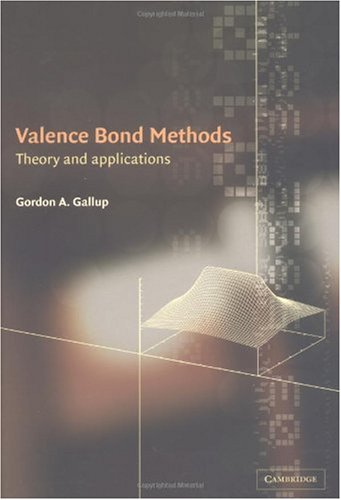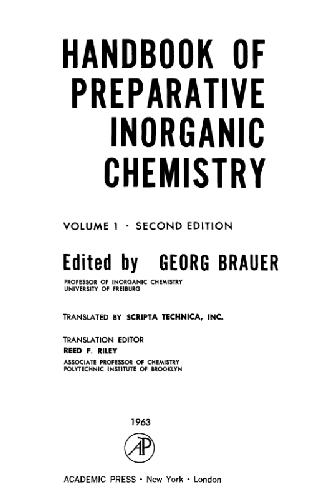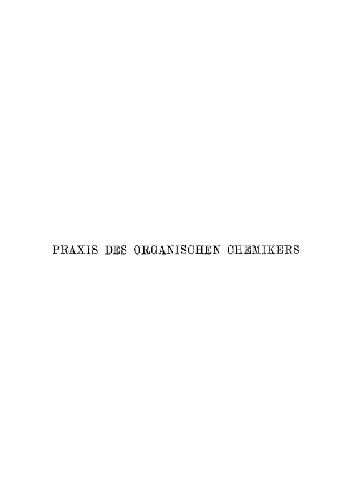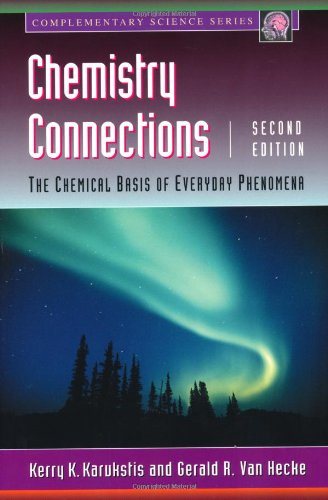Wen-Ching Yang9780824702595, 0-8247-0259-X
Table of contents :
HANDBOOK of FLUIDIZATION and FLUID-PARTICLE SYSTEMS……Page 1
Table of Contents……Page 8
CHEMICAL INDUSTRIES, A Series of Reference Books and Textbooks……Page 3
Preface……Page 6
Contributors……Page 10
Volume Diameter……Page 12
Martin Diameter……Page 13
Circularity……Page 14
Operational Sphericity and Circularity……Page 15
The Heywood Shape Factor……Page 16
2 PARTICLE CHARACTERIZATION TECHNIQUES……Page 17
Martin diameter……Page 18
2.1.3 Gravity and Centrifugal Sedimentation……Page 19
2.1.6 Resistivity and Optical Zone Sensing Techniques……Page 21
2.2 Effect of Particle Shape on Size Distribution Measured with Commercial Equipment……Page 23
2.3.2 Attrition Index……Page 24
3.1 Definition of Particle Drag Coefficient……Page 25
3.2. The Stokes Law Regime……Page 26
3.6 Empirical Drag Coefficient Expression……Page 27
3.7 Corrections for Nonspherical Particles……Page 28
4.1 Equation by Haider and Levenspiel (1989)……Page 29
4.2 Terminal Velocity by Polynomial Equations Fitted to Heywood Tables……Page 30
4.3 Calculation of Terminal Velocity of Porous Spheres……Page 31
5.1.6 Length Mean……Page 32
5.2 Statistical Characterization of Particles with a Size Distribution……Page 33
5.4 Measurement of the Angle of Repose and the Angle of Internal Friction……Page 35
NOMENCLATURE……Page 36
REFERENCES……Page 37
1.2 Random Packing of Uniform Monosize Spheres……Page 39
1.4 Specific Surface Area of the Bed……Page 41
2 PACKING CHARACTERISTICS OF BINARY MIXTURES OF SPHERICAL AND NONSPHERICAL PARTICLES……Page 42
3 CRITICAL RATIO OF ENTRANCE AND CRITICAL RATIO OF OCCUPATION IN BINARY SYSTEMS……Page 44
4 PACKING OF NON-SPHERICAL PARTICLES……Page 45
5 FACTORS AFFECTING PACKING DENSITY IN PRACTICE……Page 46
6 CORRELATIONS FOR FIXED BED BULK VOIDAGE……Page 47
7.1 Darcy’s Law……Page 49
7.2 Blake’s Correlation……Page 50
7.3 The Brownell and Kats Correlation……Page 51
7.5.1 Use of Ergun Equation to Determine Sphericity Factor……Page 52
7.9 The General Correlation by Barnea and Mednick……Page 53
7.11 Permeability of Packed Beds……Page 54
8 GAS VELOCITY DISTRIBUTION IN PACKED BEDS……Page 55
9.1.3 Wall Heat Transfer Coefficient—Two- Dimensional……Page 56
9.3 Analytical Models for Heat Transfer with Immersed Surfaces……Page 57
NOMENCLATURE……Page 59
REFERENCES……Page 61
1 INTRODUCTION……Page 63
2.2 Molerus’ Interpretation of Geldart’s Classification of Powders……Page 64
2.4 Goossen’s Classification of Particles by Archimedes Number……Page 65
2.5.1 Bubble Escaping Stage, 0 < t < tb……Page 66
3 DIFFERENT REGIMES OF FLUIDIZATION……Page 67
3.1 Transition among Fixed Bed, Particulate Fluidization, and Bubbling Regime……Page 68
3.3 Transition Between Bubbling and Turbulent Regimes……Page 69
3.4 Transition to Fast Fluidization……Page 71
4 THEORETICAL AND EMPIRICAL PREDICTIONS OF MINIMUM FLUIDIZATION VELOCITY……Page 72
6 TWO-PHASE THEORY OF FLUIDIZATION……Page 74
7 VISCOSITY OF A FLUIDIZED BED……Page 75
9 BUBBLE PHASE IN FLUIDIZED BEDS……Page 77
9.2 Bubbles in Gas–Solid Fluidized Beds……Page 78
9.3 Davidson’s Isolated Bubble Model……Page 79
9.3.2 Slow Bubbles Regime—When UB < Umf=emf……Page 80
9.4 Bubble Formation in a Fluidized Bed……Page 81
9.5 Coalescence of Bubbles in Fluidized Beds……Page 82
9.5.1 Bubble Coalescence from Mutiple Entry Nozzles……Page 84
10 SLUGGING BEDS……Page 85
10.3 Slug Length and Slug Frequency……Page 86
10.4 Minimum Bed Height Required for Slugging……Page 87
11 JETTING PHENOMENA IN FLUIDIZED BEDS……Page 88
11.1 Different Jetting Regimes Observed in Fluidized Beds……Page 90
11.2.3 Jet Penetration Depth……Page 91
11.3 Initial Bubble Size and Frequency……Page 94
11.5 Gas and Solids Entrainment……Page 95
11.6 Interacting Jets in Fluidized Beds……Page 96
12 PARTICLE MIXING AND SEGREGATION IN A GAS FLUIDIZED BED……Page 97
12.1 Particle Mixing in a Gas Fluidized Bed……Page 99
12.1.2 Convective Solids Transport and Mixing……Page 100
12.1.3 Bed Turnover Time……Page 101
12.2 Particle Segregation in a Gas Fluidized Bed……Page 102
12.2.1 Analogy to Gas–Liquid–Solid Phase Equilibrium……Page 103
12.2.3 Minimum Fluidization Velocity of a Binary Mixture……Page 104
12.2.4 Minimum Fluidization Velocity of a Multicomponent Mixture……Page 106
12.2.6 Effect of Particle Size, Density, Shape, and Gas Velocity……Page 107
Rate of Particle Separation in Batch Systems……Page 109
Continuous Operation and Industrial Applications……Page 112
12.3 Mathematical Models for Prediction of Equilibrium Concentration Profiles……Page 113
NOMENCLATURE……Page 114
REFERENCES……Page 116
2 DEFINITIONS……Page 122
3 EJECTION OF PARTICLES INTO THE FREEBOARD……Page 123
4 GAS–SOLIDS FLOW IN THE FREEBOARD……Page 124
5.1 Influence of Particle Size……Page 125
5.3.2 Effect of Diameter……Page 127
5.6 Influence of Temperature and Pressure……Page 128
6.1 Entrainment for Freeboard Heights Exceeding TDH……Page 129
6.2 Estimation of TDH……Page 130
6.3 Entrainment for Freeboard Heights Below TDH……Page 133
NOMENCLATURE……Page 134
REFERENCES……Page 135
2 MINIMUM FLUIDIZATION VELOCITY……Page 138
3 TERMINAL FALL VELOCITY OF SINGLE PARTICLES……Page 141
4.1.1 Group A Powders……Page 142
4.1.2 Group B Powders……Page 143
4.2 Temperature……Page 149
5 JET PENETRATION……Page 150
6.2 Temperature and Pressure Effects……Page 151
6.3 Entrainment and Elutriation……Page 152
7.1 Bubbling Beds……Page 153
7.2 Circulating Beds……Page 155
7.3 Application of Dimensional Analysis……Page 156
8 SINTERING AND AGGLOMERATION……Page 157
Subscripts……Page 159
REFERENCES……Page 160
Main Advantages……Page 164
Possible Disadvantages……Page 165
3.1 Jet Penetration……Page 166
3.2 Grid Pressure Drop Criteria……Page 167
3.3 Design Equations……Page 168
3.4 Additional Criteria for Sparger Grids……Page 169
5.1 Erosion at Bed Walls and Internals……Page 170
5.2 Erosion at Distributor Nozzles……Page 171
6 WEEPAGE OF SOLIDS……Page 172
8 PLENUM DESIGN……Page 173
9 POWER CONSUMPTION……Page 174
10.1 FCC Grid Design……Page 175
10.2 Polyethylene Reactor Grid Design……Page 177
NOMENCLATURE……Page 178
REFERENCES……Page 179
1 INHERENT FLOW STRUCTURES OF GAS– SOLID FLOW……Page 180
1.1 Flow Structure of Bubbling Fluidization……Page 181
1.2 Flow Structure of Turbulent Fluidization……Page 182
1.3 Flow Structure of Fast Fluidization……Page 183
2.1 Baffles……Page 184
2.2 Tubes……Page 189
2.3 Packings……Page 191
2.4 Insert Bodies……Page 193
2.5 Other Configurations……Page 195
3.1 Bubble Behavior……Page 198
3.2 Flow Distribution……Page 202
3.3 Gas and Solids Mixing……Page 203
3.4 Transition to Turbulent Fluidization……Page 204
REFERENCE……Page 206
1 INTRODUCTION……Page 209
2 THE MODES OF ATTRITION AND THE FACTORS AFFECTING THEM……Page 210
2.1.4 Particle Shape and Surface Structure……Page 212
2.1.5 Pretreatment and Preparation or Processing History……Page 213
2.2.3 Solids Residence Time……Page 215
2.2.6 Chemical Reaction……Page 216
3.2 Assessment of the Attrition-Induced Material Loss……Page 217
3.3 Assessment of Changes in the Particle Size Distribution……Page 218
4.2 Experiments to Study Attrition Mechanisms……Page 220
4.3.1 Tests Applying Well-Defined Stress……Page 221
4.3.3 Fluidized Bed Tests……Page 222
4.3.4 Cyclone Tests……Page 224
5.SOURCES OF ATTRITION IN A FLUIDIZED BED SYSTEM……Page 226
5.1 Grid Jet as a Source of Attrition……Page 227
5.2 Bubble-Induced Attrition……Page 229
5.3 Cyclones as Attrition Sources……Page 230
6 ATTRITION IN THE OVERALL FLUIDIZED BED SYSTEM……Page 232
6.2 Changes in the Bed Particle Size Distribution……Page 236
NOMENCLATURE……Page 241
REFERENCES……Page 242
2 PSEUDOHOMOGENEOUS MODELS……Page 246
3 TWO-PHASE MODELS……Page 247
3.1.1 Model of Davidson and Harrison (1963)……Page 248
3.2.1 Derivation of the Model……Page 251
3.2.2 Model Expression for First-Order Kinetics……Page 252
3.3 Bubble Assemblage Model……Page 253
3.3.1 Key Equations in the Bubble Assemblage Model……Page 254
3.3.2 Calculation Procedure Based on Bubble Assemblage Model……Page 255
3.3.4 Discussion of the Bubble Assemblage Model……Page 256
4 MULTIPLE-REGION MODELS……Page 257
4.2 Models for the Freeboard Region……Page 258
NOTATION……Page 259
REFERENCES……Page 261
1 INTRODUCTION……Page 263
2.1 Hydrodynamics……Page 264
2.2.1 Particle Gas Transfer……Page 265
Convective Heat Transfer…….Page 267
Radiative Heat Transfer…….Page 271
Freeboard Heat Transfer…….Page 272
3.1 Hydrodynamics……Page 274
3.2.2 Bed–Surface Transfer……Page 275
Convective Heat Transfer…….Page 276
4.1 Bubbling Fluidized Bed……Page 279
4.1.1 Fluidization Regime……Page 280
4.1.3 Bed-to-Tube Heat Transfer……Page 281
4.1.4 Heat Transfer Coefficient from Packet Model……Page 282
4.1.5 Heat Transfer Coefficient from Kinetic……Page 283
4.2 Fast Fluidized Bed……Page 284
4.2.2 Convective Heat Transfer at the Wall……Page 285
4.2.3 Convective Coefficient Calculated from Pressure Drop……Page 286
4.2.4 Convective Coefficient from Surface Renewal Model……Page 287
4.2.5 Heat Transfer in a High-Temperature Bed……Page 288
Greek Symbols……Page 289
REFERENCES……Page 290
2 HOMOGENEOUS BED APPROACH……Page 293
2.2 Transfer Between Fixed Bed Particles and Flowing Gas……Page 294
(a) For large particles (>1mm),……Page 295
(b) For intermediate particles (40 mm < dp







Reviews
There are no reviews yet.